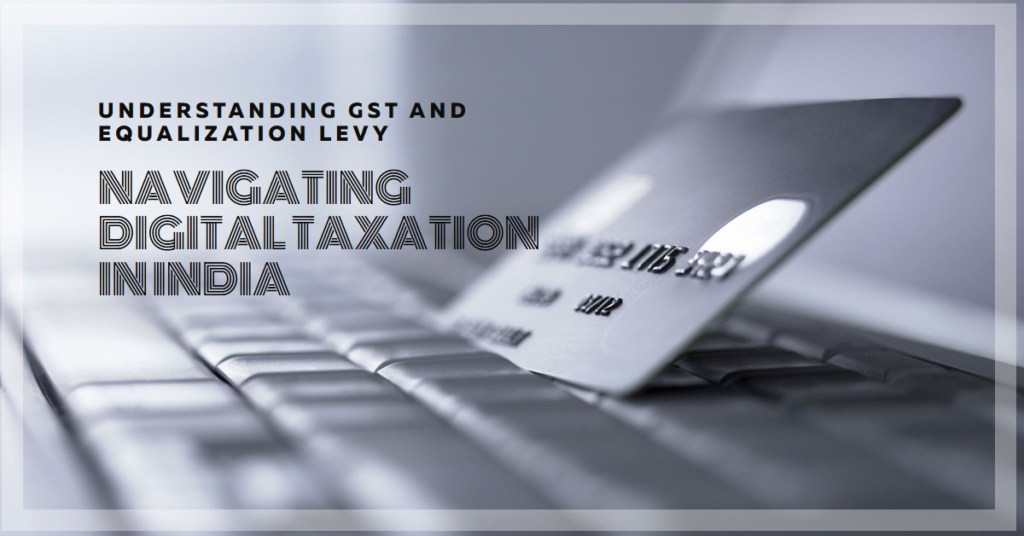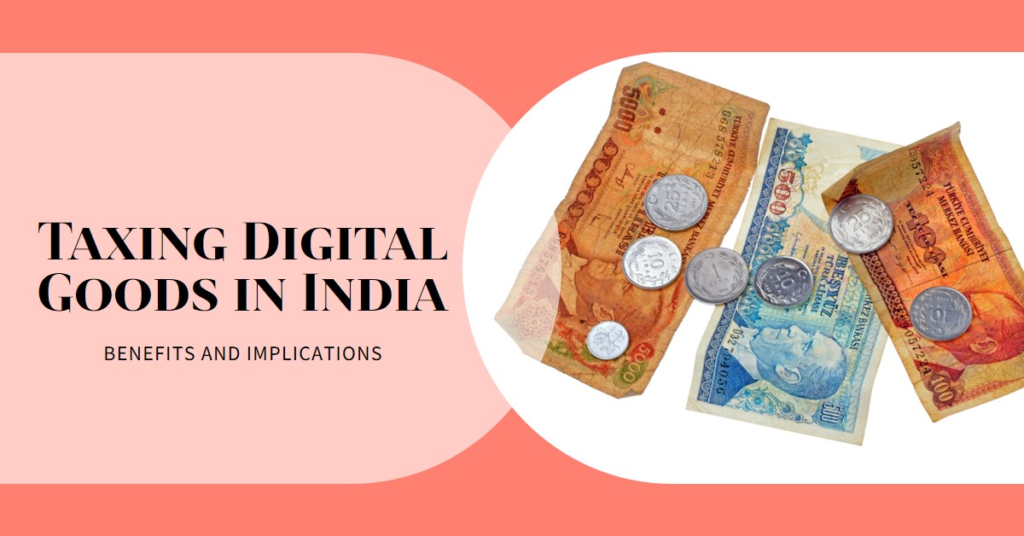India’s digital economy is experiencing phenomenal growth, necessitating a robust tax framework for digital goods and services. The government has adopted a two-pronged approach, leveraging the Goods and Services Tax (GST) and the Equalization Levy (EL) to capture this economic activity.
What Are Digital Goods?
Digital goods, also referred to as e-goods, are intangible products that exist in a digital format. Unlike physical goods, you can’t hold them in your hand. They are typically downloaded or accessed online.
Here are some common examples of digital goods:
- E-books and audiobooks
- Software and apps
- Music, movies, and video games
- Online courses and educational materials
- Templates, clipart, and other digital design assets
- Subscriptions to online services (like streaming platforms or cloud storage)
- Digital collectibles and virtual goods in video games
The taxation of digital goods in India is a complex and evolving landscape. Here’s a breakdown of the current situation:

- Goods and Services Tax (GST):
- Introduced in 2017, GST applies to a broad range of goods and services, including digital ones.
- Services mediated by information technology are classified as Online Information Database Access and Retrieval (OIDAR) services.
- OIDAR services were previously exempt for overseas providers. However, this exemption was terminated in October 2023.
Currently, a flat 18% GST is levied on the sale of digital services in India.
- Equalization Levy (EL):
- Aimed at taxing foreign e-commerce companies that don’t have a physical presence in India.
- Introduced in 2016 for online advertisements, the EL was expanded in 2020 to cover all digital services provided by non-resident e-commerce operators.
- The EL Is levied at a rate of 2% on the consideration received by these non-resident operators.
Taxation of Virtual Digital Assets (VDAs):
- Introduced in April 2022, a separate tax regime applies to VDAs, which includes cryptocurrencies and some digital goods.
- Income from the transfer of VDAs is taxable at 30% (plus cess), with no deductions allowed except for the acquisition cost.
- The taxation of VDAs creates some uncertainty for how certain digital goods might be classified.
Current Issues:
- The classification of specific digital goods under GST, EL, or VDA can be unclear.
- The recent termination of the GST exemption for overseas OIDAR service providers requires them to comply with Indian tax regulations.
There are several potential merits to taxing digital goods in India:

- Increased government revenue: A tax on digital goods can generate significant revenue for the Indian government, which can be used to fund social programs, infrastructure development, and other public initiatives.
- Levels the playing field: A tax on digital goods can help to level the playing field between domestic and foreign businesses. Previously, some foreign companies may have had an advantage because they weren’t subject to Indian taxes on digital sales.
- Discourages tax avoidance: A clear tax framework for digital goods can discourage businesses from trying to avoid taxes by routing sales through other countries
- Reflects the digital economy: As the digital economy continues to grow, it’s important for India’s tax system to keep pace. Taxing digital goods ensures that the government is collecting revenue from this new and growing sector.
There are a few potential Demerits to taxing digital goods in India:

- Double Taxation: This is a concern whenever a good or service can be taxed in multiple jurisdictions. Since digital goods can be accessed from anywhere, there’s a risk that companies could be taxed on the same income by both India and other countries!
- Compliance Burden: New tax regulations can add complexity for businesses, especially foreign ones. This can be particularly challenging for the digital economy, where business models can be complex and constantly evolving.
- Impact on Consumers: Ultimately, some of the tax burden may be passed on to consumers in the form of higher prices for digital goods and services.
- Discouraging Innovation: A complex tax system could stifle the growth of the digital economy in India, especially for startups. This could limit India’s ability to compete in the global digital marketplace.
There are a couple of reasons why India taxes digital goods and services:

- To create a level playing field: Brick-and-mortar businesses that sell physical goods have to pay taxes, so the government wants to make sure digital businesses aren’t getting an unfair advantage. By taxing digital goods and services, the government is creating a more level playing field for all businesses!
- To raise revenue: The digital economy is a major source of income these days, and India wants to get its fair share of tax revenue from this sector. Just like with traditional sales taxes, the government can use this revenue to fund public services and programs.
It’s Important to note that India’s tax laws for digital goods are still evolving. The government is constantly looking for ways to improve the system and make it more efficient.
#epicinfinite #epicarticle #epicblog
Do you have any questions about the GST or Equalization Levy?










